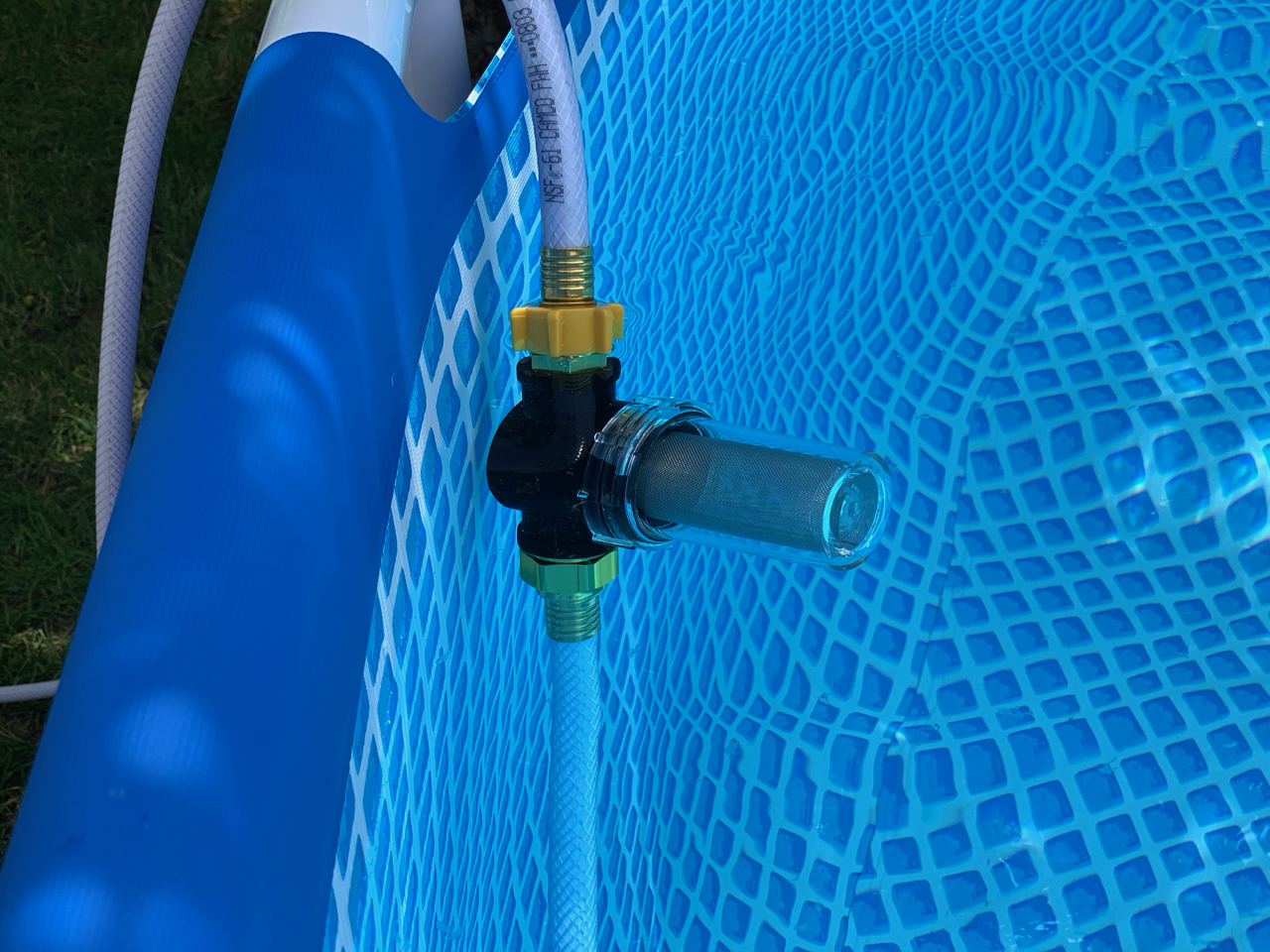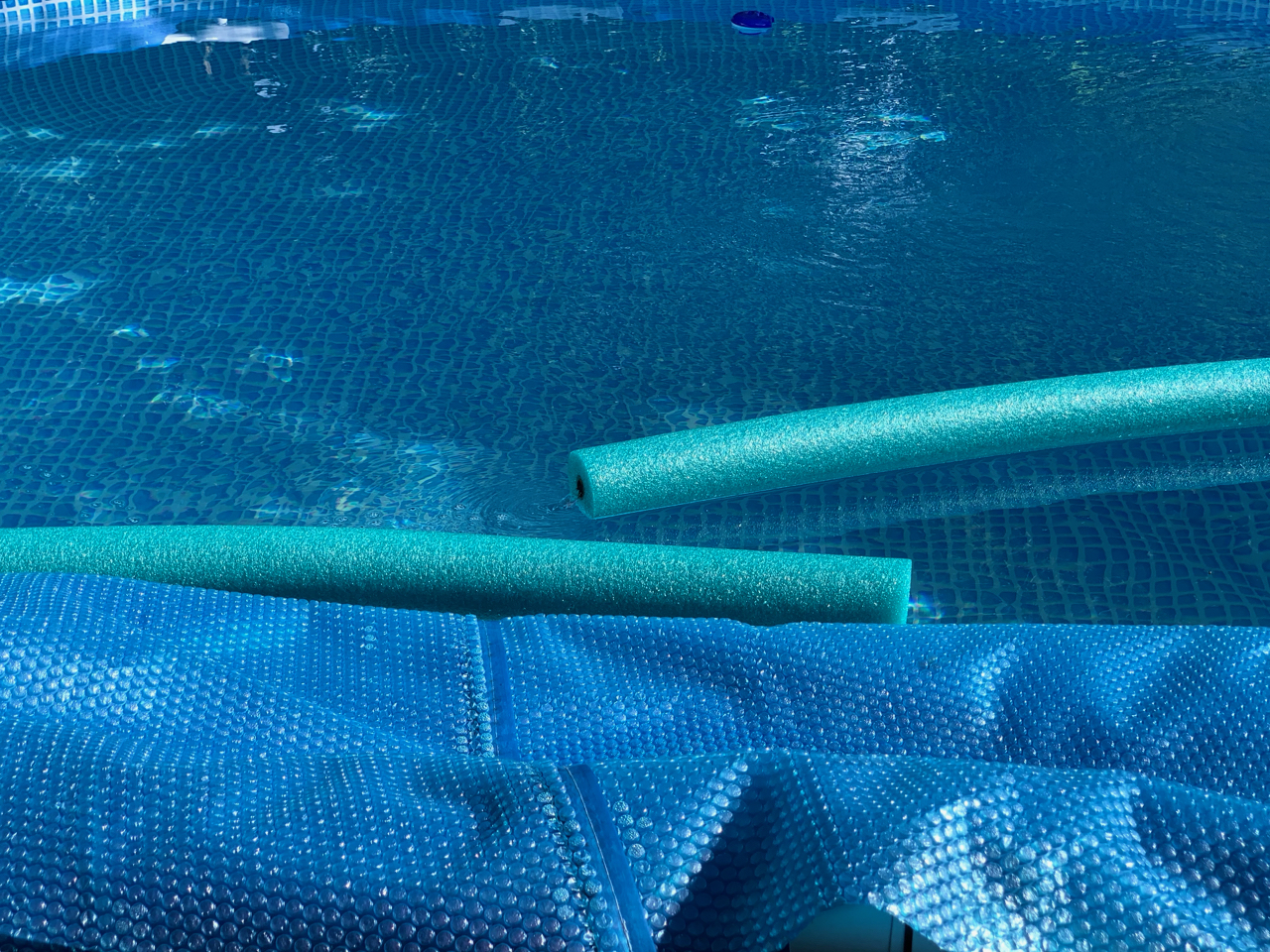Daily Operation
Starting the System
The startup procedure is simple but should be followed consistently for safety:
Visual Inspection
- Check all hose connections for tightness
- Verify propane tank is secure and upright
- Ensure pump cord and GFCI outlet are dry
- Check that the return hose is properly positioned in the pool
Startup Sequence
- Turn on the propane cylinder valve
- Plug in the pump to the GFCI outlet
- The heater should automatically ignite when water flows
- Verify ignition by checking the heater display
- Listen for proper water flow sounds
Stopping the System
Always follow this shutdown order for safety:
- Shutdown Sequence
- Unplug the pump first (stops water flow)
- Turn off the propane cylinder valve
- Allow the system to cool before handling
Important: Always unplug the pump before turning off the propane to prevent the heater from overheating.
Maintenance Schedule
Weekly Maintenance
Check Screens and Filters
- Inspect the pump inlet screen for debris
- Check the external inlet filter for cleanliness
- Clean or replace filters as needed

System Inspection
- Test the GFCI outlet function
- Check all hose connections for leaks
- Verify propane tank level
- Inspect hoses for wear or animal damage
Bi-Weekly Maintenance
Flow Testing
- Disconnect all but one hose from the pump
- Check water flow rate - should be strong and consistent
- Reconnect hoses and test full system flow
Connection Cleaning
- Disconnect and clean hose connections at the heater
- Check for mineral buildup or corrosion
- Apply thread sealant if needed
Propane System Check
- Test all propane connections with soapy water for leaks
- Check regulator for proper operation
- Verify heater ignition system is working properly
Seasonal Maintenance
Start of Season
- Replace heater batteries
- Deep clean all filters and screens
- Inspect all hoses for winter damage
- Test complete system operation
End of Season
- Drain all water from hoses and heater
- Store propane tank in approved location
- Clean and store pump indoors
- Coil hoses properly to prevent kinking
Performance Optimization
Heating Efficiency Tips
Temperature Management
- Heat during warmest part of the day for efficiency
- Use a pool cover to retain heat when not in use
- Consider heating in cycles rather than continuously
System Setup
- Position return hose to create good circulation
- Keep heater in shaded area if possible
- Ensure adequate ventilation around heater
Fuel Economy
Propane Usage
- A 30 lb tank typically provides 8-12 hours of heating
- Monitor usage patterns to predict refill needs
- Consider having a backup tank for uninterrupted use
Enjoying the Results
After all the work of building and maintaining the system, the payoff is worth it!

Troubleshooting Guide
Common Issues and Solutions
Reduced Water Flow
- Clean pump inlet screen
- Check for kinked hoses
- Replace clogged filter
- Verify pump is fully submerged
Inconsistent Heating
- Check propane tank level
- Clean heater water passages
- Verify proper water flow rate
- Check for air bubbles in system
Heater Won’t Stay Lit
- Replace heater batteries
- Check for adequate ventilation
- Verify minimum water flow requirements
- Test propane regulator function
High Propane Usage
- Check for gas leaks with soapy water
- Verify heater temperature settings
- Consider shorter heating cycles
- Check for proper heater sizing
Safety Reminders
- Never leave the system unattended for extended periods
- Always prioritize safety over convenience
- Keep emergency contacts handy (fire department, gas company)
- Review safety procedures with all family members
Cost Analysis
After a full season of use, our operating costs were:
- Propane: Approximately $15-20 per month during heavy use
- Electricity: Minimal increase in electric bill for pump operation
- Maintenance: Under $25 per season for filters and minor parts
Total Operating Cost: Roughly $80-100 per season for a dramatically more comfortable pool experience.
Final Thoughts
This DIY propane pool heater has provided us with an affordable way to extend our pool season and enjoy comfortable water temperatures. The initial investment of about $300 has paid for itself in the first season compared to commercial pool heating options.
The system requires attention and maintenance, but the daily operation is straightforward. Most importantly, it’s allowed us to enjoy our pool much more throughout the warmer months.
Stay tuned for our final post in this series about some unexpected wildlife encounters that taught us additional lessons about protecting our DIY pool heating system!